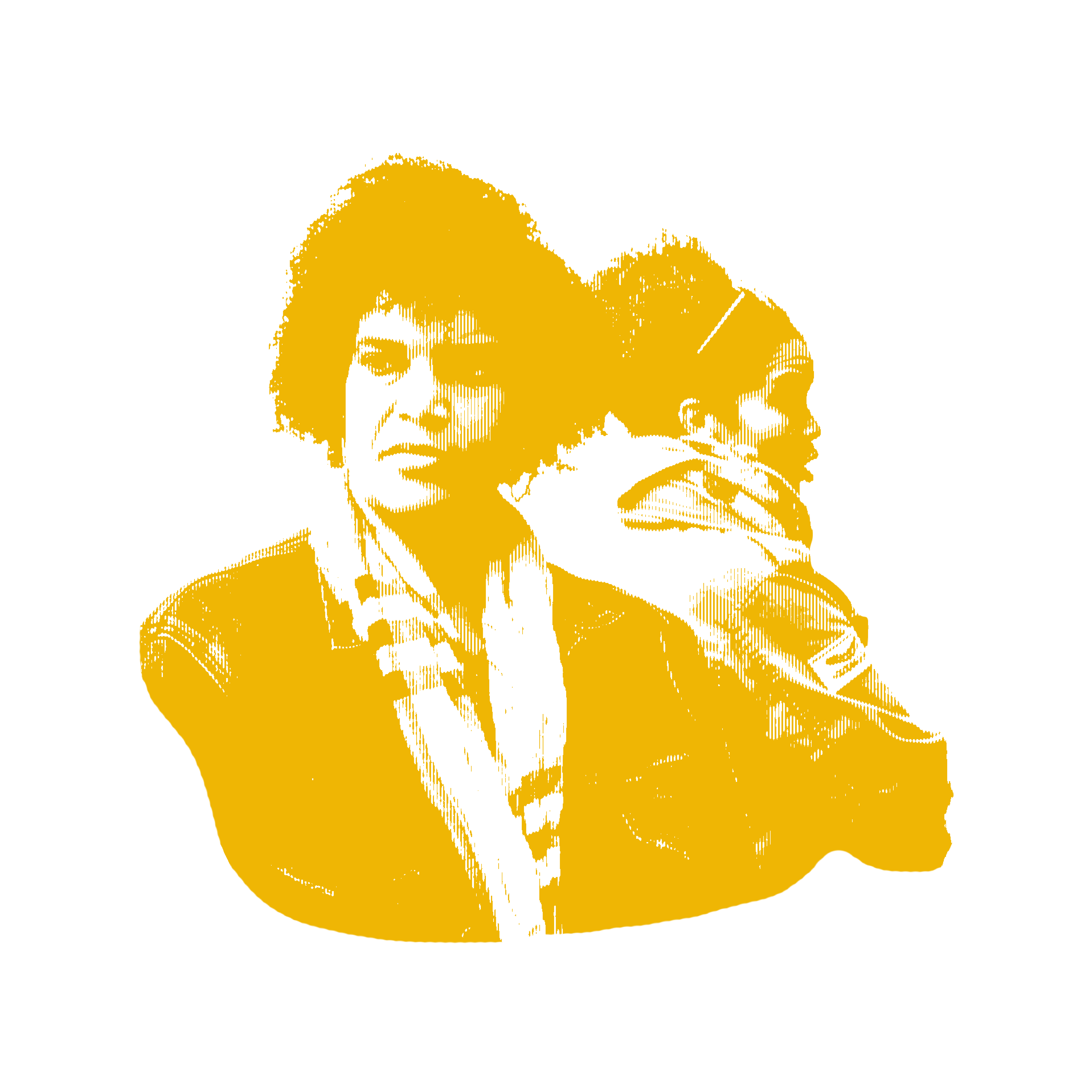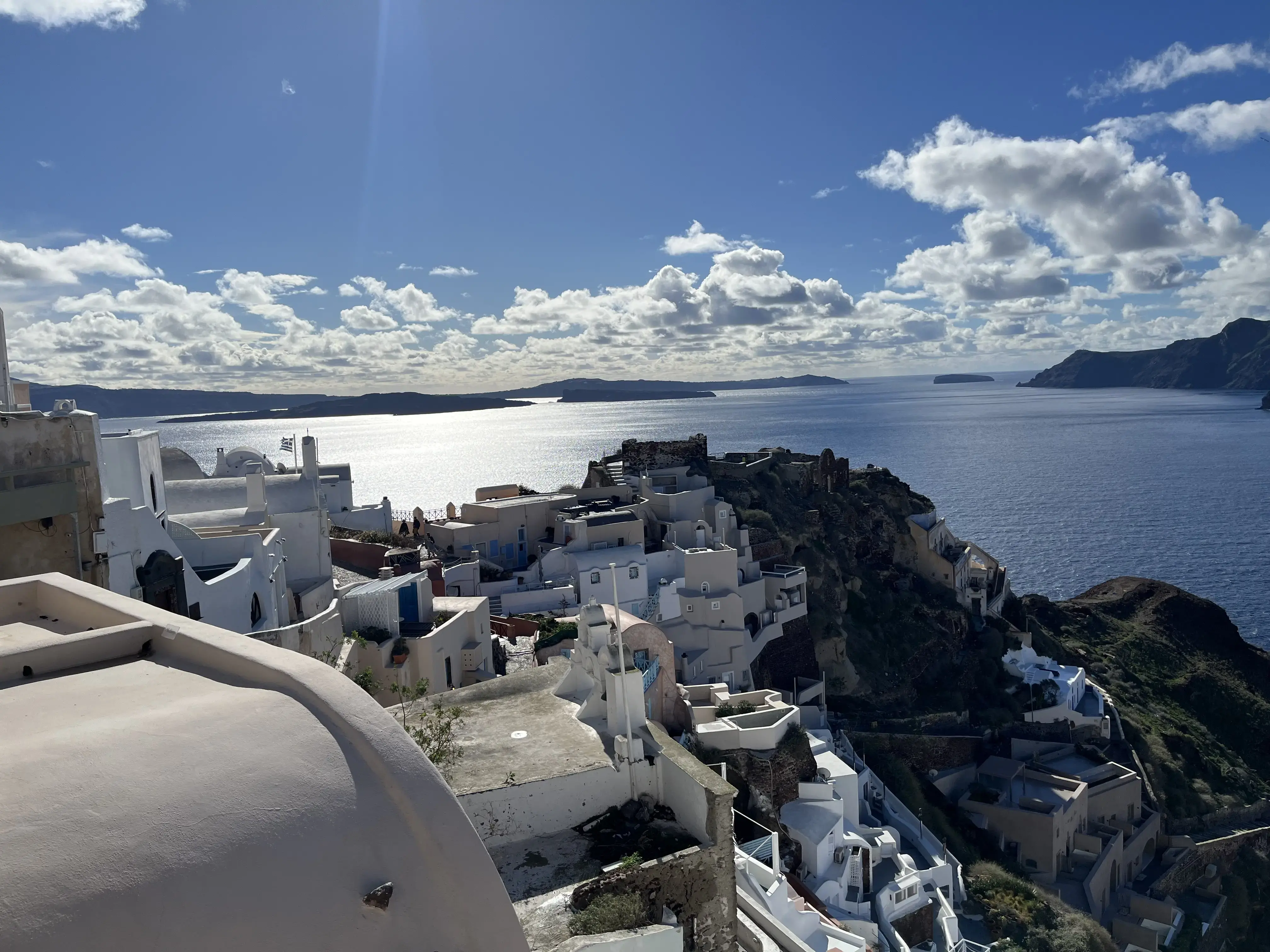
Outside the city center and past the marble-white streets crowded with tourists, in the hidden rural landscape of Akrotiri on the Greek island of Santorini, Maria Matsanto has her shop—and a new way of engaging with tourists. Matsanto runs Faros Market, a family store that only sells traditional Greek items created in-house.
Alongside her husband, she handmakes and cooks all items she sells, infusing Greek culture and the history of Santorini into every product. Faros Market separates itself from the souvenir shops, restaurants, and what many deem as the tourist traps of Santorini, reflecting how one can work in the tourism industry while still valuing culture over commercialization.
Her work, she hopes, gives an answer to what researchers and locals alike see as the island’s existential paradox—Santorini needs the tourism that is destroying their own island. Matsanto strives to preserve the history of Santorini through her products while also being environmentally conscious, changing the tourism industry from within.

As a nonprofit journalism organization, we depend on your support to fund more than 170 reporting projects every year on critical global and local issues. Donate any amount today to become a Pulitzer Center Champion and receive exclusive benefits!
Amidst a growing global conversation about tourism and its environmental and cultural ethicality, the island of Santorini has been used as a prime example with scholars and locals alike claiming the island is becoming a resource for profit rather than a place for living.
Santorini, also referred to as Thira in Greek, is an island in the South Aegean Sea located off Greece’s most southern coast. This tiny island is home to only 15,500 permanent residents who live there year-round according to Greece’s number-one travel agency, Greeka.
However, in the summer, the island explodes into a tourist mecca of 2 million visitors, forming what Professor Abraham Pizam, founding dean of Rosen College of Hospitality Management at the University of Central Florida, calls “the most over-touristic, crowded, and commercialized area of Greece if not the entire world.”
The majority of the people in Santorini make their entire living from the tourist industry with CNN in 2020 stating that 90% of the island’s income comes from tourism. Terkenli Theano, professor of geography at the University of Aegean in Greece, explains that Santorini’s economy is centered on tourism with locals working as hotel staff, restaurant employees, travel agents, or as the owners of these businesses.
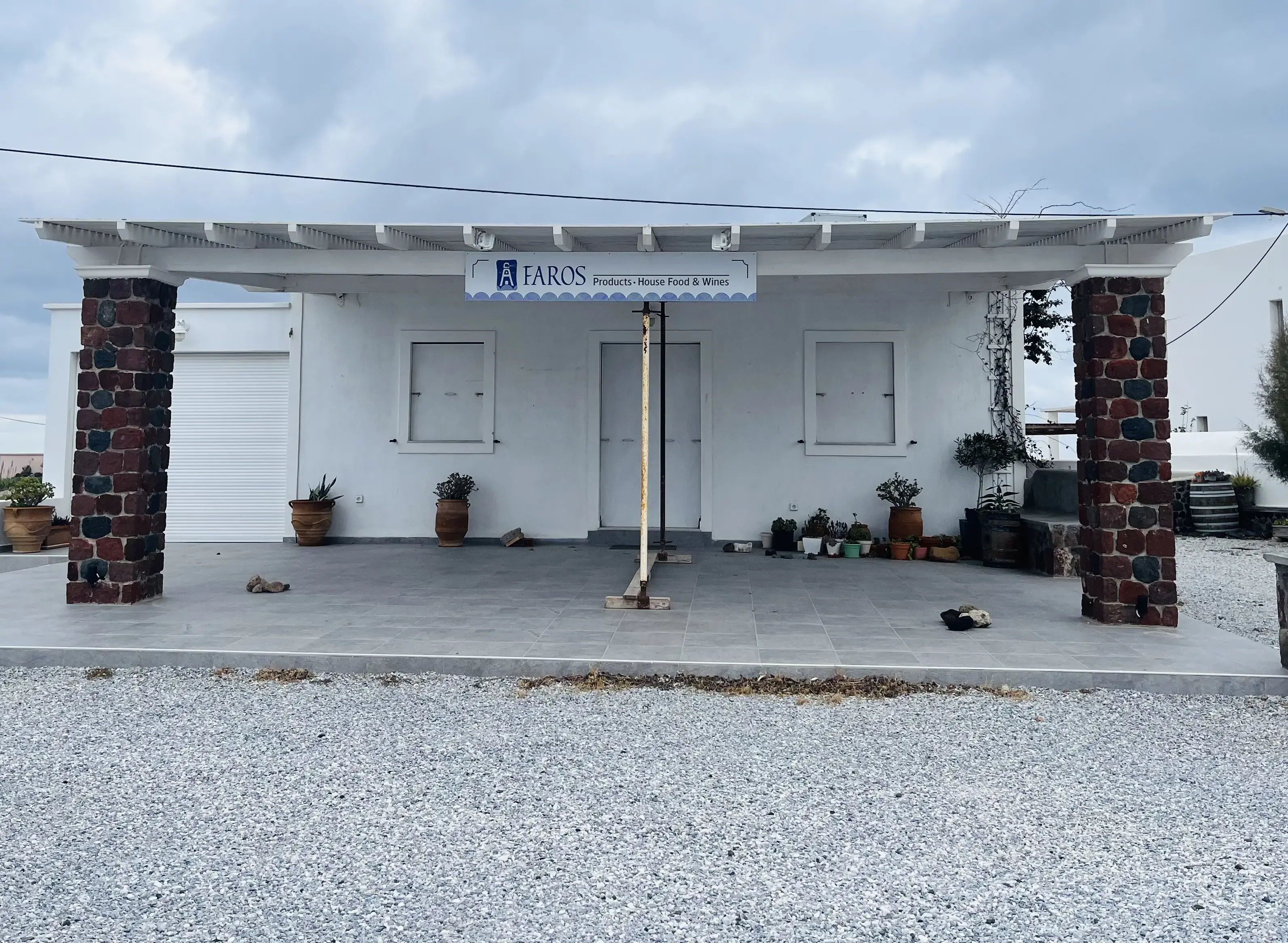
If one wants to find a job outside tourism, one likely has to return to the mainland. If one wants to stay in Santorini, it is often a system of work in tourism or don’t work at all. As Theano says, “feed a tourist or don’t feed yourself.” And while some praise the tourism industry for keeping the island economically afloat, many residents say their own well-being is left behind.
Tourism in Santorini has led to residents at times fearing eviction or homelessness. Nicoletta Barbata, the author of the blog One Quarter Greek, explains that while moving to Santorini in 2017, her biggest struggle was finding housing. Barbata states that private properties and permanent lodgings are becoming slim in Santorini, as many property owners have discovered that putting their properties on Airbnb can bring in more money than having renters or selling.
Marianna Andreadaki, a teacher working at the school of Kamari in Santorini, says that she has changed houses six times in the last four years either because of increasing rent prices or because her landlords kicked her out of her homes in the summer in order for them to put the property on Airbnb.
Tourism also has harmed both Santorini’s environment and way of living. Matsanto states that rural life is slowly being overridden by Santorini’s tourist boom, as fewer businesses are growing their own products and instead are resorting to importing goods from the Greek mainland, causing many Santorini farmers to lose their only source of income. She states, “the foundations for which Santorini life was built on are now being not only replaced but forgotten.” She continues that the building of large hotels and shops takes farmland and crowds areas where residents used to enjoy the quiet.
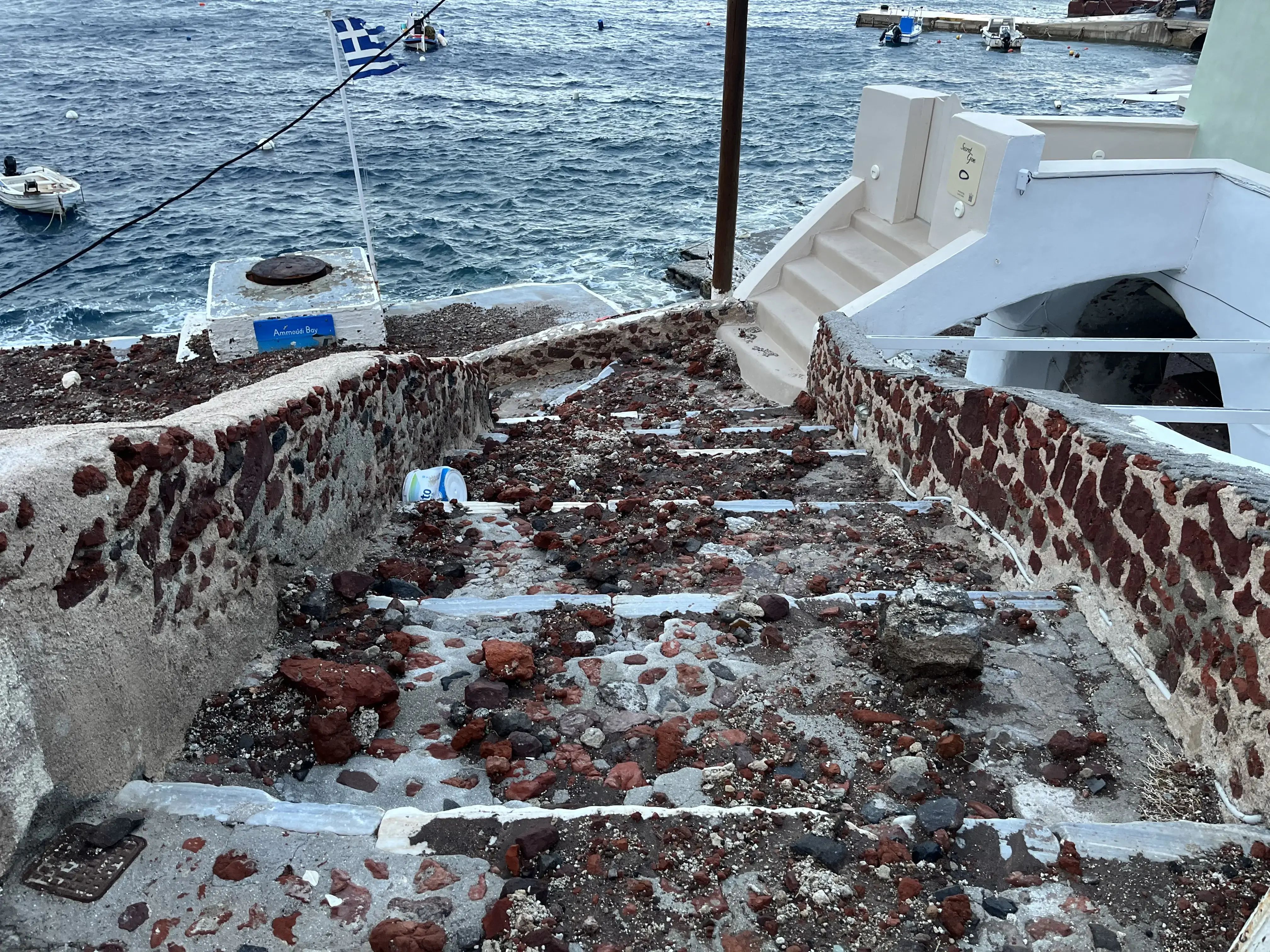
Also, the fast-paced construction on Santorini often leads to landslides and agricultural harm. Many of the pristine white-marbled paths that bring tourists to the island can also be seen covered by tar, cement, paint, and rubble; many large spaces of farmland can be seen dug up for construction; and many small houses that used to hold residents can be seen abandoned due to rising costs of living.
However, all of these issues become much more present to the eye once you walk into the areas where most tourists don’t stay, exemplifying how the issues of tourism are often hidden from the tourists themselves. Barbata states it best when she says “Santorini is beautiful with its clear blue water, yet with all of the sea, the water system is not fit for all the tourists and the land of some areas is utterly inhabitable.”
When speaking to locals on the street, many spoke about how although their economy relies on tourism, this does not give tourists the excuse to disrespect their property, history, or culture.
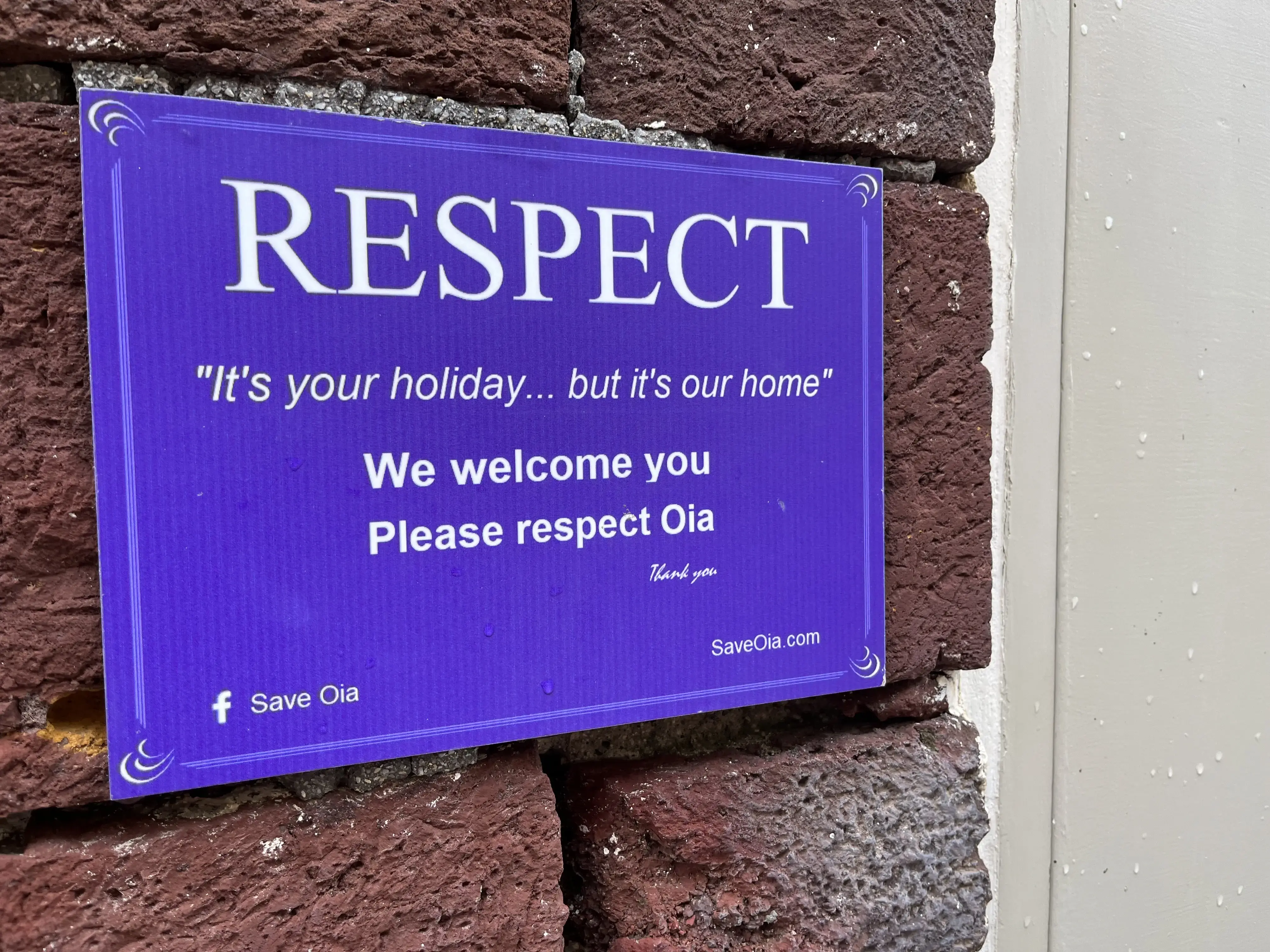
When walking through Oía, the most touristic area of Santorini, one’s eye is drawn to the no-gap-seven-foot-tall cement fence that surrounds the elementary school. The fence is endowed with a large white sign with bold font telling people not to take pictures of the children.
Cora, a mother of two on the island, who asked for her full name to not be used due to working in the tourism industry, explained that “tourists in the past have entered the school illegally to film and even pose with the children for photos.” Continuing on that, “I feel as though I live in an amusement park, and my family is part of the attraction.”
Many streets in Oía are marked by signs asking tourists to remember that although it is their holiday, the city is the locals’ home. The small square purple signs hung up on walls of the city were put up by Save Oía, a local non-governmental organization focused on maintaining the island of Santorini and propagating their organizational message of “Be a traveler, not a tourist.”
This is a message Maria Matsanto believes is key to saving Santorini. She advocates that both politicians and tourists need to realize the impacts tourism has on the island and, most importantly, that to be a good traveler is to embrace the culture of where one is going.
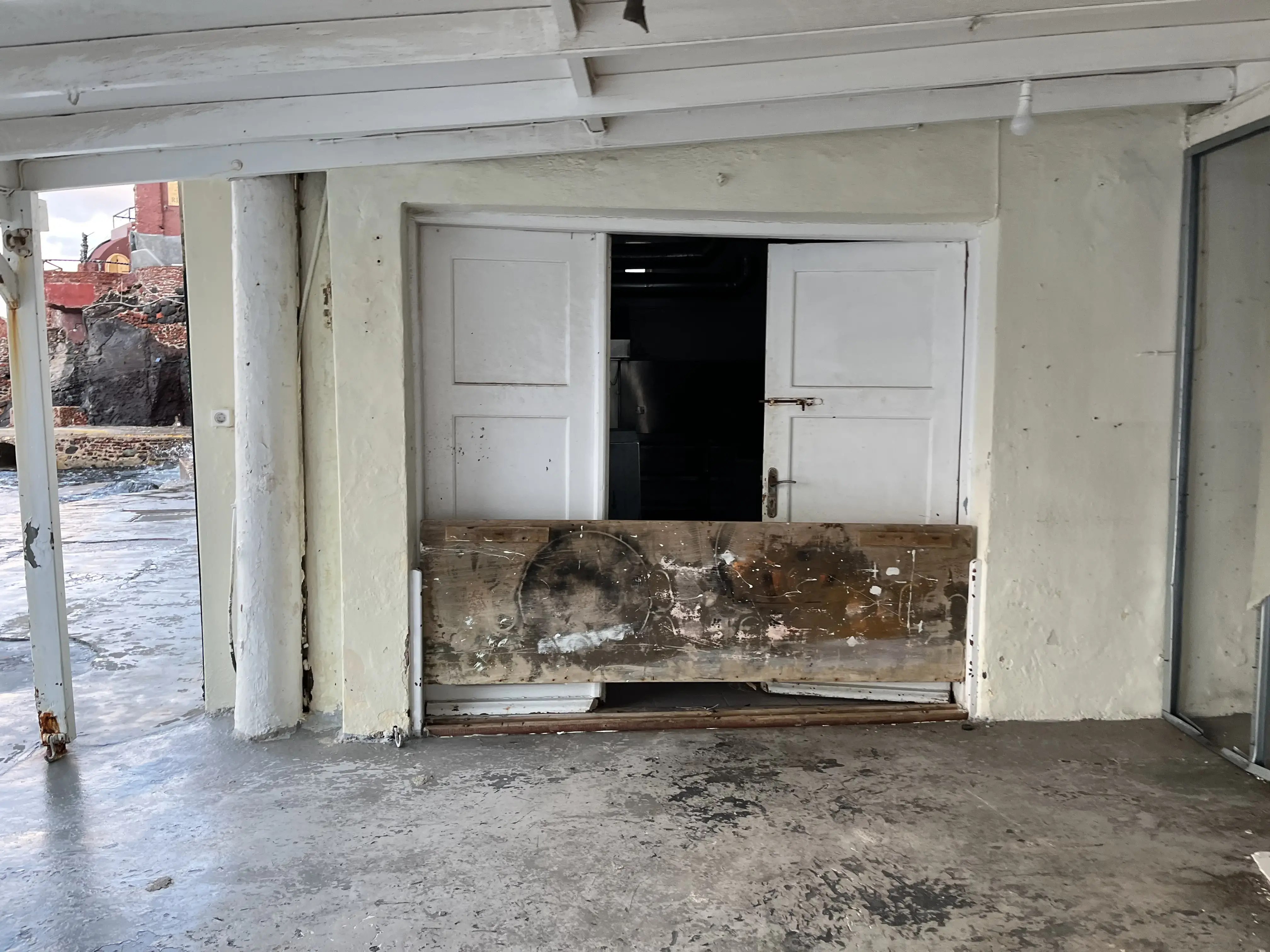
Matsanto’s love for her own Greek culture is what inspired her to go against the profit-hungry tendencies of tourism. She took a risk by having her business both in a more rural area of the island and by selling traditional locally grown Greek products rather than tacky trinkets.
Matsanto was willing to risk her ability to make a profit in order to keep her culture. She states that Faros Market was never built to be a tourist spot, but rather as a spot for cultural exchange.
However, Matsanto’s views on travelers embracing the areas they visit and the idea of “Be a traveler, not a tourist” reflects on the question of what it means to be a tourist today. Does tourism require taking something with you from the place you leave behind even if you try not to? Whether it is a souvenir, a small step towards environmental damage, or even the forced commercialization of another group’s culture, can one ever really be a tourist without also being an extractor?
The issue is only worsened by the fact that many Santorini residents don’t have a choice but to be part of the problem. Catrin Guenther, an art gallery technician and tourist regulation advocate, explains how one cannot run from tourism in Santorini. As almost every job is connected to the tourism industry and jobs are becoming more and more difficult to find, Guenther states that “while it is common to want tourism reform, it is incredibly fearful to protest, to petition, or even talk about the issue, understanding that if you talk too harshly, your employer could fire you, and if you limit the tourism industry, you could lose not only your job but your ability to get another.”
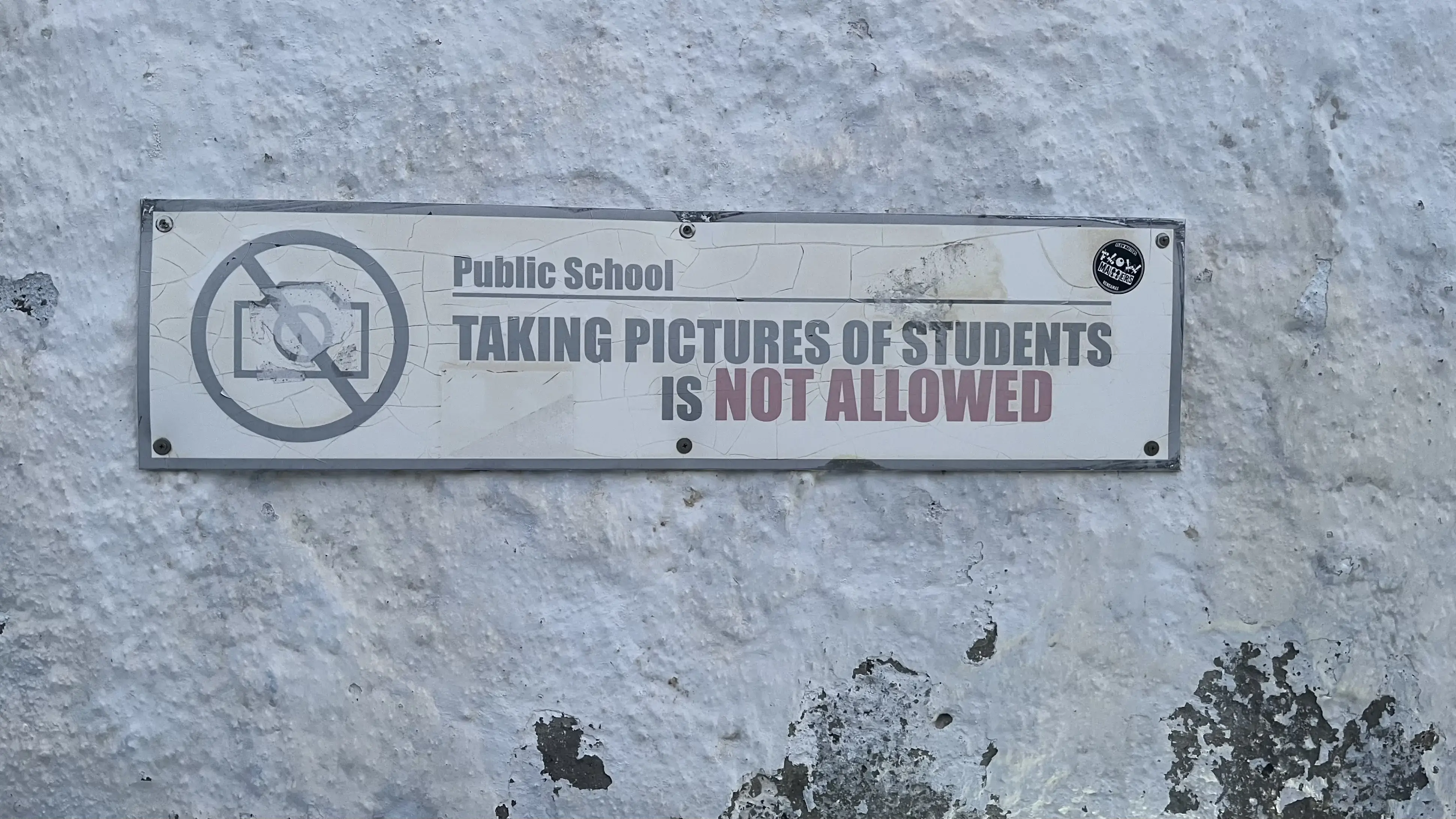
This reliance on tourism is what keeps individuals turning a blind eye to the extraction that occurs. Andreas Papatheodorou, a professor of Industrial and Spatial Economics with an emphasis on tourism at the University of the Aegean in Mytilene Greece, explains that a lot of corporations in Santorini dislike terms such as “over-tourism” and “anti-tourism sentiment” due to these labels painting tourism in Santorini as only negative when it is also what the economy thrives off. He continues that if terms like “over-tourism” are used, it will lead to fewer tourists visiting the island due to being worried about it being overcrowded and causing environmental damage.
However, it is locals like Nicoletta Barbata, Catrin Guenther, and Maria Matsanto who say this is exactly why people should use these terms, as the island is by definition overcrowded and facing environmental damage. All three of these residents believe the first step toward solving the problem is addressing that it is there, and this is exactly what they are all doing.
Residents like Guenther and Matsanto, and even the Greek Tourism ministry, are fighting for more legislation surrounding tourism on the island, stating that there is a need for restrictions on the number of tourists who can enter the island per day. All 23 of the locals I spoke to supported the idea, while the three business owners and five researchers were much more hesitant to call for immediate reform, stating that limits on tourism would hurt businesses and state-wide economic well-being, reflecting how there is no easy "one size fits all" solution to this problem.
Matsanto lies at the center of this issue, relying on tourism while trying to fight the extraction it comes with. She runs a business that sees tourists as a prime customer group, but she prides herself in only selling handmade and homegrown items, each one a reflection of Santorini’s local culture and her love for it. She not only serves tourists but speaks to them about their impact, taking the process of extraction and turning it within itself.
She states it best herself when she says: “Come to Santorini, walk the streets, see the beautiful island, but do it with care, recognizing what you are taking home with you. Learn about our traditions and learn about our culture because we want to tell it to you.”













